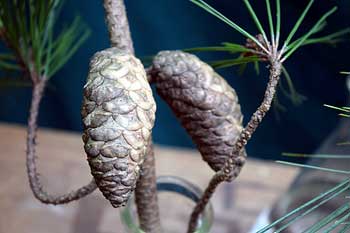February Color Appears at the Washington Park Arboretum

February 8 – 21, 2015
1) Pinus greggii
- This three-needle pine from northeastern Mexico is closely akin to P. patula but less ornamental. Its oval-conical cone clusters stay closed on the branch for several years. This specimen and the others described here can be found within Crabapple Meadow, along the east side of Arboretum Drive.
2) Pinus jeffreyi
- Native mainly of California in the Sierra Nevada and Siskiyous, this lofty tree is said to grow to 200 feet in the wild. P. jeffreyi is closely allied to P. ponderosa and at one time, it was normal to regard it as a variety of that species. Its three-needle bundles are said to give off a fruity scent when bruised.

3) Pinus montezumae var. lindleyi
- This five-needle pine is native to southern and central Mexico at subtropical and cool temperate altitudes, with its best development at 7,000 to 8,000 ft. Its flexible, pendulous leaves (growing to 14 inches or longer) along with its broad, dome-shaped crown give it a distinct look.
4) Pinus pinaster
- Commonly known as the Maritime Pine, this specimen is native to southwestern Europe and north Africa. The glossy green leaves of this pine are the largest and stoutest of all two-needle pines, and it is said to be one of the best for light sandy soils. As its common name implies, it thrives in coastal maritime localities.
5) Pinus strobus ‘Fastigiata’
- A native of eastern North America, P. strobus has proven to be a valuable timber tree and one of the richest assets of our country. Its bluish-green five-needle clusters are three to five inches long, with lines of white stomata on the inner sides. Once again, all of these specimens listed here can be found within Crabapple Meadow, along the east side of Arboretum Drive.